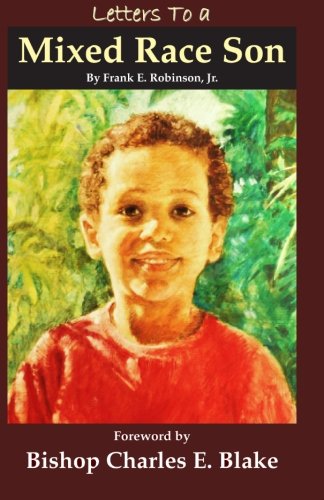Letters To a Mixed Race SonPosted in Autobiography, Books, Media Archive, Monographs, Religion on 2014-12-13 21:35Z by Steven |
CreateSpace
2012-01-06
152 pages
5.5 x 0.4 x 8.5 inches
Paperback ISBN-10: 1468184024; ISBN-13: 978-1468184020
Foreword by Bishop Charles E. Blake
In a world that continues to grapple with notions of race, a loving father writes a series of letters that speak into the life of his biracial son. In the book’s foreword, Bishop Charles Blake introduces us to Frank Robinson and these Letters To a Mixed Race Son. In 1984, Frank Robinson was a young minister serving in southern Alabama, when word got out that he was engaged. It would be an interracial marriage, which quickly became a local controversy, both scandalous and dangerous. This marriage was announced not long after a lynching in one of the neighboring areas. For safety, their first child was born across the state line. Frank began to understand that if he did not survive, his wife would be left a widow and his son without a father. With this in mind, he began to write letters that would survive in a book. He intended to say the things a father should say and to equip his son to live a meaningful life. Further, even when this son was so young, the letters were written as to a man, so that when the boy became a man, he could have this book. This father writes about identity, character and the timeless responsibility of men and fathers. He speaks of courage as one faces life, hardship and injustice. He tells his son of perseverance, humility and faith, of how to deal with disappointment, criticism, and so much more. These letters were written over years and through seasons of difficulty. The author reminds his son to never forget what struggle is like. These are love letters and wisdom writings, powerful, profound, and infused with a sense of eternity and mortality, of hope and purpose. There is a moment of humor and insight when the little boy came home from kindergarten and earnestly asked, “Is someone in our family white?” Responded to in the affirmative, he demanded, “Who is it?” This book tells of a unique and interesting journey. The mixed race son has grown up, is now married, a new father and a military officer, who serves his country during a time of war. In 2011, about twenty five years after the project started, Frank Robinson gave the hand written original book of letters to his son, who has already begun to write letters to his own child. The author has read a few of these letters to some scarred and damaged people. He found the words he wrote to his own son, were medicating to the sons and daughters of others. Further, these letters may help the reader to see the world a little differently and possibly to find a better self. This work is heartfelt, moving and refreshing, ultimately a rich, deep and encouraging piece of literature.

